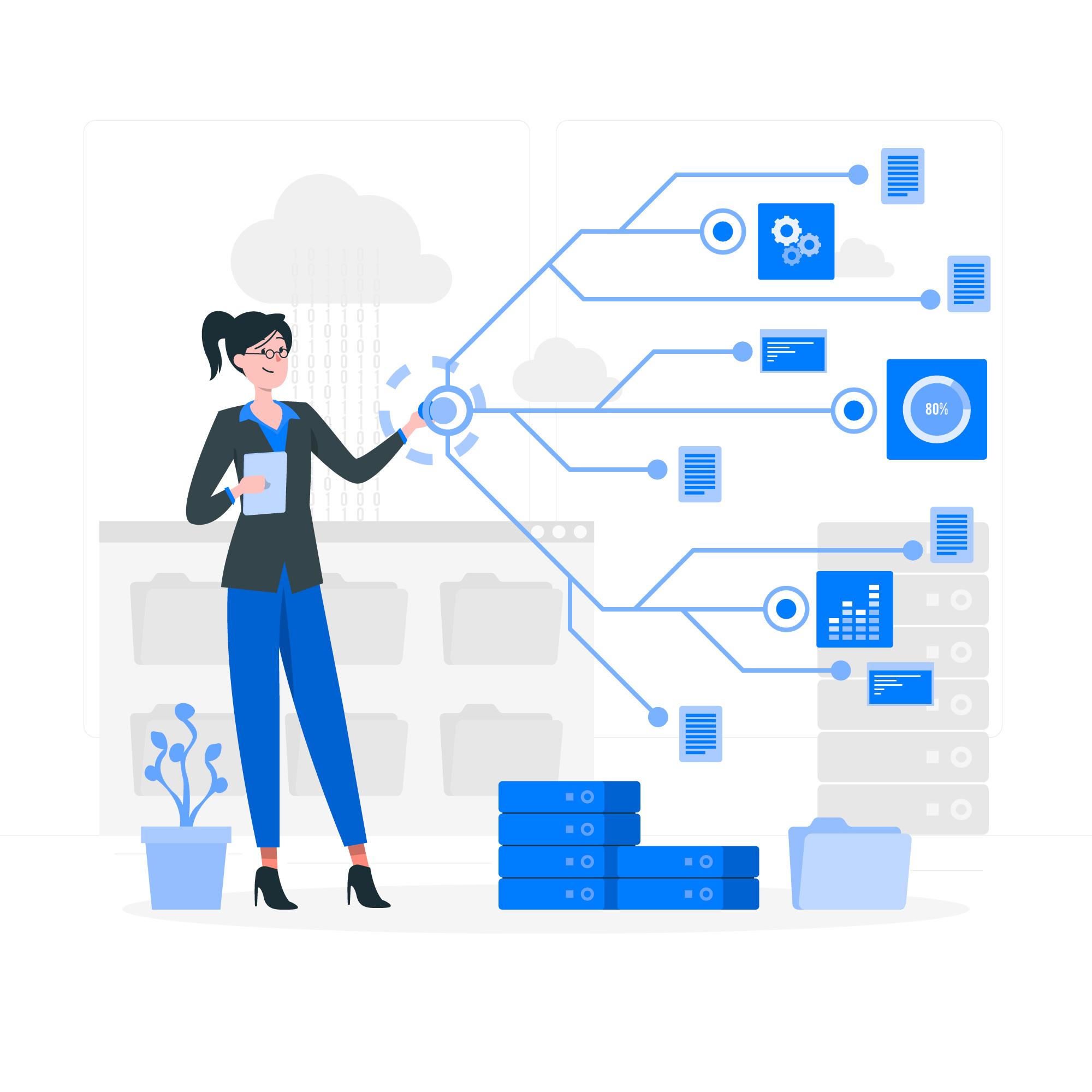In retail and omnichannel commerce, the average customer expects a completed transaction, from purchase to delivery, to happen without friction. What they do not see is the backend orchestration it takes to make that happen. According to McKinsey, nearly 40 percent of B2C companies report persistent revenue leakage caused by disconnected Point of Sales (POS) systems and back-office platforms. And at the center of that gap is usually the order-to-cash (O2C) process—one that can be resolved with smart POS NetSuite integration.
When POS systems fail to communicate correctly with NetSuite, orders are missed, payments do not reconcile, inventory data becomes outdated within hours, and revenue recognition becomes a spreadsheet nightmare. This is not just about processing transactions. It is about getting the full commercial lifecycle (order capture, invoicing, payment, delivery, and accounting) to behave like a system, not a jigsaw puzzle.
If you care about getting billing, fulfillment, and financial records to align across your stores, warehouses, and accounting teams, read on. This is not just another POS integration overview. It is the wiring diagram for OTC clarity.
Why POS-to-NetSuite Integration Is the First Real Step to a Mature OTC Backbone?
Most retail businesses start with the right intentions. The POS system is chosen for usability, cost, and uptime. NetSuite is adopted to handle finance, accounting, tax, inventory, and compliance. Individually, both platforms function. But the moment you expect the data to travel across them with accuracy and timing, the cracks show.
Point of Sales systems capture more than just transactions. They collect customer data, item-level detail, tender type, promotion usage, tax jurisdiction, and store location. When that level of granularity does not flow properly into NetSuite, here is what breaks:
- Revenue becomes disconnected from physical fulfillment.
- Inventory is shown as available when it is not.
- Returns and exchanges are handled manually or not at all.
- Sales data never matches finance data at month end.
In short, POS data that does not integrate tightly with NetSuite causes dissonance. And dissonance costs money, trust, and audit readiness.
The Real-World Data You Need to Capture from POS to NetSuite
Integration is not just syncing orders. It is orchestrating specific fields and entities. Here is the actual data map you should care about:
- Sales Orders: Customer name or anonymous tag, SKU, quantity, unit price, discounts, tax rate, and sales rep
- Payments: Tender type, authorization ID, payment gateway code, and cash drawer references
- Invoices and Receipts: POS transaction ID, register number, time stamp, and receipt metadata
- Inventory Impact: Store location, current stock, backorder logic, and replenishment triggers
- Returns and Exchanges: Linked transaction, refund method, item condition, and re-stock location
- Customer Records: Loyalty ID, email, phone, order history, and opt-in preferences
When done right, each POS transaction becomes a structured set of NetSuite objects (Sales Order, Customer Payment, and Inventory Adjustment), linked together through native or custom connectors.
Syncing Transactions in Real Time vs. Batching Overnight: What Works and When
Retail leaders often ask whether they should run POS integrations in real-time or batch mode. The correct answer depends on both operational volatility and risk appetite.
- Real-time sync is essential for businesses where inventory is dynamic, or customer behavior depends on accurate availability. Think electronics, fashion, or flash sales. In these cases, real-time order push and inventory pull help prevent overselling and enable location-level stock visibility.
- Batch sync, often run every 4 to 8 hours, works for mid-volume businesses where latency is acceptable. If store transactions are high but inventory cycles are predictable, batching avoids API overload while still maintaining financial accuracy.
- Hybrid sync models are increasingly popular. Payment and order data is sent in real-time. Inventory and settlement data is sent in scheduled batches with reconciliation logic.
The decision should not be based on platform capabilities alone. It must align with how operations are actually executed, and where latency causes the most downstream cost.
Handling Errors, Refunds, and Reconciliation Across POS and NetSuite
Even the cleanest POS systems produce dirty data at scale. Card failures, barcode mismatches, network lags, duplicate orders, these are not edge cases. They are normal, and integration must treat them as such.
Error-Capturing Needs to Be Proactive, Not Passive
The integration must capture and flag:
- Failed payment attempts with trace logs.
- Transactions missing required fields (such as item location or tax code).
- Duplicate orders or partial syncs.
- Item mismatches between POS SKU and NetSuite item record.
- Timeouts during NetSuite record creation.
Each of these errors should generate a logged payload with context, not merely a generic “failed” message. Logging is not just for engineering teams. It is for operations. Give teams visibility so they are not chasing receipts blindly.
Refunds and Exchanges Require Two-Way Logic
POS returns must trigger corresponding NetSuite actions:
- Credit Memo.
- Inventory return or disposal logic.
- Updated sales reports.
- Adjusted loyalty or reward systems.
Most systems fail here because they do not model the refund process correctly in NetSuite. Refunds are not reversals of the original transaction. They are new transactions with linked references, timestamps, and conditional handling (was the product defective, resalable, or discounted at return?). If this nuance is ignored, financial statements drift over time.
Mapping Real Business Rules Into the Integration Architecture
Off-the-shelf connectors only solve the mechanical syncing. They do not understand your business rules. A custom layer is usually required.
Define Rules Before You Build Logic
Every NetSuite object should be created only if:
- A valid customer match or anonymous guest fallback exists.
- The item code exists in the specific location’s inventory.
- The POS tender code maps to a valid NetSuite payment method.
- Discounts and taxes reconcile with internal ledgers.
- Promotion IDs are tracked and auditable.
If these rules are not defined up front, the integration becomes a patchwork of manual overrides. And that defeats the point of automation.
Supporting Omnichannel Scenarios: Buy Online, Return in Store
Here is where things get complicated, and where most POS–NetSuite integrations show their limitations. The modern retail model includes:
- Buy Online, Pick Up In Store (BOPIS)
- Buy In Store, Ship from Warehouse
- Return Online Purchases at Storefronts
- Mixed fulfillment with partial delivery
Each scenario has different implications for:
- Inventory commitment
- Revenue recognition
- Return handling
- Tax jurisdiction mapping
The integration must support two-way logic, not just outbound transaction posting. NetSuite needs to know when an online order was modified, fulfilled, returned, or canceled from a storefront, with traceable source references.
Deployment: Get the Sequence and Dependencies Right
POS integration with NetSuite is not a single deployment; it is an ecosystem rollout. Each step has dependencies.
What Comes First?
- Item and SKU Alignment: POS cannot send orders until all items are defined in NetSuite. That includes variants, tax groups, pricing tiers, and location inventory levels.
- Customer Record Strategy: Decide whether to create every customer in NetSuite, or only those above a purchase threshold. Some businesses opt for anonymous guest logic with optional post-purchase enrichment.
- Payment Gateway Reconciliation: Ensure tender codes in POS match the NetSuite payment methods, including how you treat gift cards, store credit, and mixed tenders.
- Testing Real Transaction Flows: Do not test sample data. Test actual POS transactions across tender types, discount conditions, and location variances.
Why Is This Integration Worth Doing Properly?
This is not just about syncing two systems. It is about reconciling reality (what happened at the store) with the financial system that books revenue, reports tax, and supports audit. And the only way to do that at scale is to automate it with logic that understands what happens on both sides of the counter.
Streams Solutions: A Real Integration Partner for Retail
At Streams Solutions, we do not just wire up endpoints. We build for resilience, observability, and business fit. Our integration approach maps real-world operational flows into technical architecture that scales, across stores, regions, and platforms.
If your team is navigating fragmented billing, messy returns, inventory surprises, or reconciliation gaps, our team will help define the architecture that actually works.
Let us help you fix your Order-to-Cash chaos, one integration at a time. Speak to our POS integration consultants and start building your bridge between sales floors and finance floors because those are not separate worlds anymore. They are just disconnected ones. Let us connect them.




